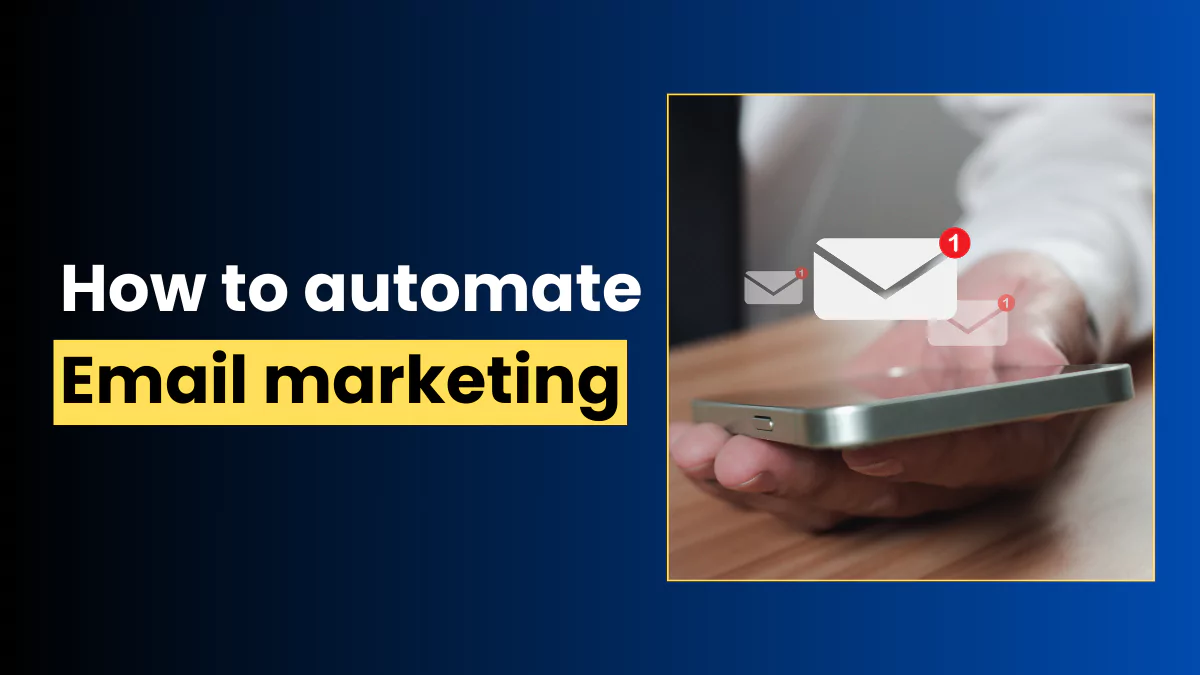Automate Your Real Estate Email Marketing

By Team Dlanes
Table of Contents
In the fast-paced world of real estate, time is of the essence. With numerous clients to manage, properties to showcase, and leads to nurture, finding efficient ways to streamline your marketing efforts is essential for success. Email marketing automation offers a solution by allowing you to send targeted messages to your contacts at the right time, without manual intervention. In this comprehensive guide, we’ll explore the benefits of automating your real estate email marketing, the key steps to set up automated campaigns, and best practices to maximize your results.
Introduction
Email marketing automation has revolutionized the way real estate professionals connect with their audience. By leveraging automation tools and strategies, you can save time, increase efficiency, and deliver personalized messages that resonate with your contacts. In this guide, we’ll delve into the advantages of automating your email marketing efforts and provide practical tips for implementing automation in your real estate business.
Benefits of Automating Your Email Marketing
1. Time Savings
Automation allows you to set up email campaigns in advance and schedule them to be sent at optimal times, eliminating the need for manual intervention. This frees up your time to focus on other aspects of your business, such as client meetings, property showings, and lead generation activities.
2. Improved Efficiency
With automated workflows in place, you can streamline repetitive tasks and processes, such as sending follow-up emails, nurturing leads, and segmenting your audience. This enables you to reach more contacts with relevant messages in less time, leading to improved efficiency and productivity.
3. Personalized Communication
Automation tools enable you to segment your email list based on factors such as demographics, behavior, and interests, allowing you to deliver highly targeted and personalized messages to your contacts. By tailoring your communication to each recipient’s needs and preferences, you can increase engagement and build stronger relationships with your audience.
4. Increased Engagement and Conversions
Automated email campaigns can be designed to deliver timely and relevant content that resonates with your audience, increasing engagement and driving conversions. By nurturing leads through automated workflows, you can guide prospects through the buying or selling process and ultimately convert them into clients.
5. Data-driven Insights
Automation platforms provide valuable insights into the performance of your email campaigns, including open rates, click-through rates, and conversion metrics. By analyzing this data, you can gain a deeper understanding of your audience’s preferences and behaviors, allowing you to optimize your campaigns for better results.
Key Steps to Set Up Automated Email Campaigns
1. Define Your Goals and Objectives
Before implementing automation in your email marketing strategy, clearly define your goals and objectives. Determine what you want to achieve with your automated campaigns, whether it’s nurturing leads, promoting listings, or driving conversions.
2. Segment Your Email List
Segment your email list based on criteria such as demographics, location, interests, and stage in the buying or selling process. By segmenting your audience, you can deliver targeted messages that are more relevant and engaging to each group of recipients.
3. Choose an Email Marketing Automation Platform
Select an email marketing automation platform that meets your needs and budget. Look for features such as automation workflows, segmentation capabilities, A/B testing, analytics, and integration with other tools and systems.
4. Create Compelling Content
Develop high-quality content for your automated email campaigns, including engaging subject lines, informative and relevant messaging, and compelling calls-to-action. Tailor your content to each segment of your audience to maximize its effectiveness.
5. Set Up Automated Workflows
Design automated workflows that guide contacts through the buyer’s or seller’s journey based on their behavior and interactions with your emails. Map out the steps of each workflow, including triggers, actions, and conditions, to ensure a seamless and personalized experience for your audience.
6. Test and Optimize
Continuously monitor and analyze the performance of your automated email campaigns, and experiment with different elements such as subject lines, content, timing, and frequency. Use A/B testing to compare variations and optimize your campaigns for better results.
Best Practices for Automated Email Marketing in Real Estate
1. Provide Value at Every Stage
Deliver valuable and relevant content to your contacts at every stage of the buyer’s or seller’s journey. Offer educational resources, market updates, property listings, and exclusive deals that address their needs and interests.
2. Personalize Your Communication
Use data-driven insights to personalize your emails based on each recipient’s preferences, behavior, and stage in the buying or selling process. Address contacts by name, segment your audience, and tailor your messaging to their specific needs and interests.
3. Maintain Consistency and Frequency
Establish a consistent schedule for your automated email campaigns to keep your audience engaged and informed. Strike a balance between staying top-of-mind with your contacts and avoiding email overload by optimizing the frequency of your communications.
4. Monitor and Measure Results
Track key metrics such as open rates, click-through rates, conversion rates, and unsubscribe rates to evaluate the effectiveness of your automated email campaigns. Use this data to identify areas for improvement and refine your strategies for better results.
5. Stay Compliant with Regulations
Ensure that your automated email campaigns comply with relevant regulations, such as the CAN-SPAM Act and GDPR. Obtain consent from contacts before sending them marketing emails, provide clear opt-out mechanisms, and respect their preferences and privacy rights.
Conclusion
Automating your real estate email marketing efforts can help you save time, increase efficiency, and deliver personalized messages that engage and convert your audience. By defining your goals, segmenting your audience, choosing the right automation platform, creating compelling content, and optimizing your campaigns, you can maximize the impact of your email marketing efforts and drive success in your real estate business.
FAQs
What types of emails can be automated in real estate marketing?
Various types of emails can be automated in real estate marketing, including welcome emails, property alerts, follow-up emails, nurture sequences, market updates, and transactional emails such as appointment reminders and closing notifications.
How can I ensure that my automated emails are personalized and relevant to each recipient?
Use data segmentation to tailor your emails to each recipient’s preferences, behavior, and stage in the buying or selling process. Personalize your content, subject lines, and calls-to-action to make your emails more relevant and engaging.
What are some common pitfalls to avoid when setting up automated email campaigns?
Common pitfalls to avoid include neglecting to define clear goals and objectives, failing to segment your audience effectively, choosing the wrong automation platform, creating generic or irrelevant content, and neglecting to monitor and optimize your campaigns over time.
How can I integrate automated email marketing with other marketing channels and strategies?
Integrate your automated email marketing efforts with other channels and strategies, such as social media, content marketing, and lead generation activities, to create a cohesive and multi-channel approach that maximizes your reach and impact.
What are some best practices for maintaining compliance with email marketing regulations?
Stay up-to-date with relevant regulations such as the CAN-SPAM Act and GDPR, obtain consent from contacts before sending marketing emails, provide clear opt-out mechanisms, and honor unsubscribe requests promptly to maintain compliance and build trust with your audience.


